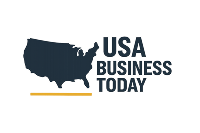Consumer confidence isn’t just an economic number—it’s a pulse check on your customer base. If you want to stay profitable in 2025, your strategy needs to reflect how people are thinking and feeling right now.
Here’s how to adapt:
1. Focus on Value, Not Just Price
When confidence dips, people look closely at what they’re getting for their money. That doesn’t always mean they want the cheapest option—but they do want to feel like every dollar counts.
💡Your move:
- Highlight the value and longevity of your product or service.
- Use testimonials, case studies, or guarantees to build trust.
- Offer bundles or flexible pricing tiers to create perceived value.
2. Market with Empathy
Tone matters. If your marketing feels too pushy, luxurious, or out-of-touch, it may backfire. Consumers are paying attention to messaging that acknowledges the times without feeding into fear.
💡Your move:
- Use language that emphasizes support, transparency, and empowerment.
- Avoid FOMO marketing and heavy pressure tactics.
- Show up as helpful and human—especially in email and social content.
3. Reevaluate Big-Picture Investments
If your business depends heavily on consumer spending (think retail, hospitality, or non-essential services), take a fresh look at your expansion plans. With borrowing still expensive in 2025, it’s smart to proceed with caution.
💡Your move:
- Delay large capital investments unless ROI is clear.
- Keep your cash flow healthy—consider revisiting payment terms or subscriptions.
- Explore grants, regional programs, or partnerships that reduce capital risk.
4. Optimize for the “Considered” Buyer
In 2025, more customers are pausing to research before they buy. Impulse purchases are down, while comparison shopping is up. Your digital presence needs to support those deeper buying journeys.
💡Your move:
- Strengthen product pages with clear information and trust signals.
- Create FAQ sections, buying guides, and comparison tools.
- Lean into reviews, social proof, and user-generated content.
5. Double Down on Retention
When acquiring new customers gets harder, keeping the ones you already have becomes critical. Repeat customers cost less to serve and tend to spend more over time.
💡Your move:
- Start or refresh your loyalty program.
- Use email sequences to nurture post-purchase relationships.
- Ask for feedback and show you’re listening.
6. Don’t Ignore the Optimists
Not everyone is holding back. Some segments—especially high-income earners, certain Gen Z consumers, and B2B buyers—are still spending. If your brand serves any of these groups, don’t be afraid to speak to their mindset.
💡Your move:
- Segment your audience and tailor offers accordingly.
- Test messaging that celebrates opportunity, growth, or innovation.
- Avoid one-size-fits-all pessimism—your buyers may surprise you.
Looking Ahead: What Could Change?
Consumer confidence will remain volatile in 2025 due to several external forces:
- The president will dominate the news cycle and influence spending behavior.
- A potential shift in interest rate policy could free up or restrict consumer credit.
- Any shocks to employment, energy prices, or international trade could shift sentiment quickly.
Smart businesses will stay agile, using real-time insights and customer feedback to navigate the months ahead.
Strategy Starts with Understanding
At the end of the day, economic trends are just signals. What matters most is how you interpret them and adjust your business accordingly.
In 2025, businesses that succeed will be:
✅ Customer-aware
✅ Value-driven
✅ Operationally lean
✅ Brand-authentic
Consumer confidence isn’t about predicting the future. It’s about reading the room and responding with empathy, flexibility, and clarity.
If you do that consistently, your customers will reward you with trust—and that’s the most valuable currency there is.





